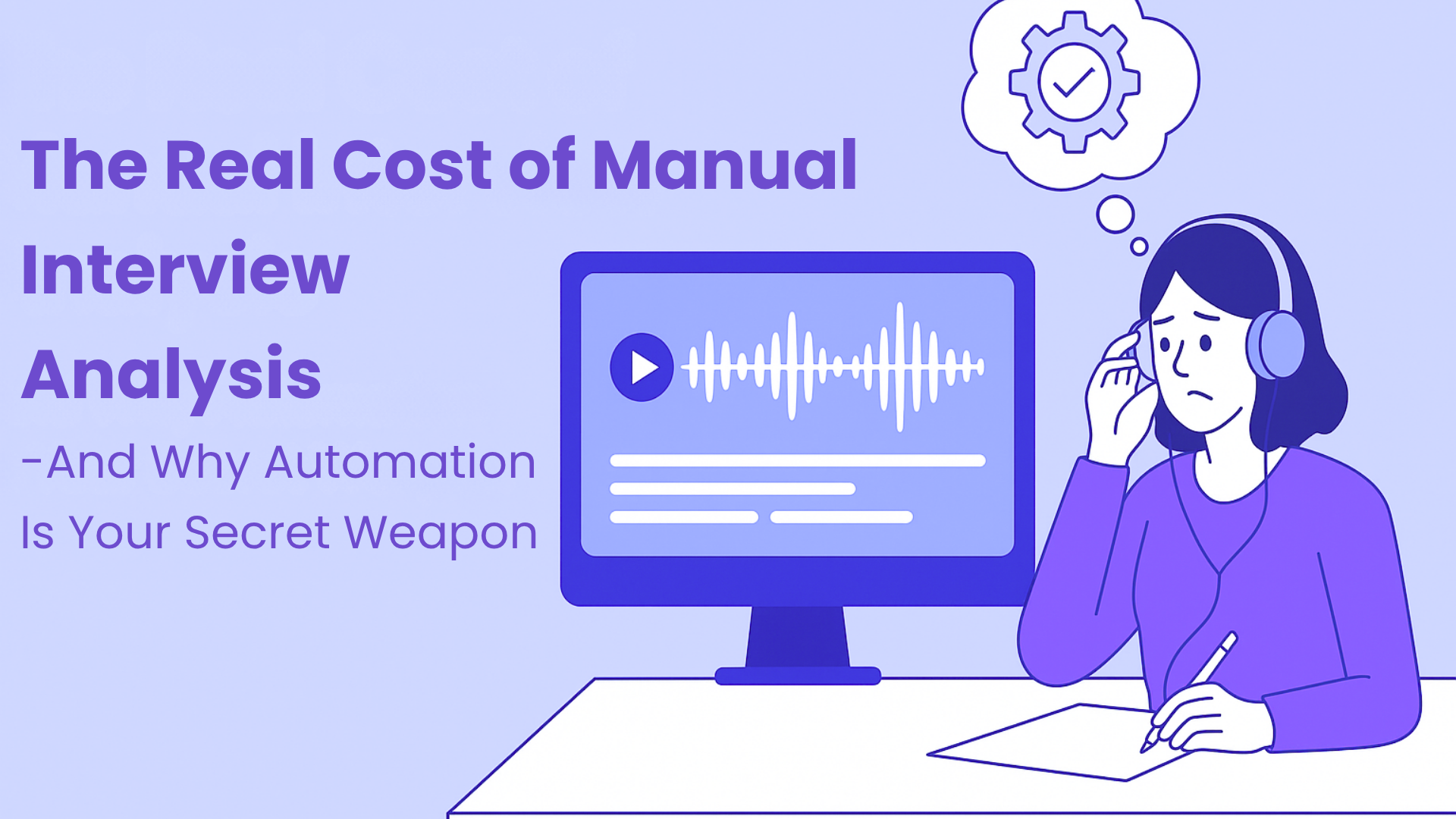The Real Cost of Manual Interview Analysis and How Automation Improves Decision Making Speed
-
Kehinde Fatosa
- 10 min read

In every company, there’s a hidden tax, paid not in dollars, but in hours. It’s the time teams lose analyzing customer interviews manually. On paper, it doesn’t look like much: a few hours spent transcribing, then more time tagging, summarizing, sharing in Slack or Notion. But when stacked over time, the real cost becomes impossible to ignore.
Manual analysis drags your team into a cycle of inefficiency. Valuable insights sit in files that no one revisits. Stakeholders misinterpret or ignore insights altogether. Product and marketing teams waste weeks guessing what customers really mean. Meanwhile, your competitors, who’ve already adopted automated workflows, are outlearning you.
This is the unspoken danger of relying on manual analysis in a world that runs on speed.
Why Manual Analysis Is Slowing You Down
Manual methods are romanticized. Some teams still believe that the only way to extract true insight is to listen to every second of every recording and personally code each theme. But the trade off is brutal:
- It doesn’t scale. If you’re running 10+ interviews per week, your research team becomes a bottleneck.
- Insights get stale. By the time the report is ready, stakeholders have moved on.
- Quality drops. Rushed teams overlook key patterns, over focus on quotes, and miss what really matters.
And when you try to speed things up manually, accuracy suffers. Patterns go unnoticed. Teams make decisions based on intuition, not evidence.
What You’re Actually Paying for Manual Analysis
Think about what goes into analyzing just one interview:
- Transcription: 45 minutes
- Reviewing and tagging: 1 – 2 hours
- Synthesizing: 1 hour
- Sharing insights: 30 minutes
Even at the low end, that’s over 3 hours per interview. Now multiply that by 20 interviews a month. You’re looking at 60+ hours monthly. That’s someone’s full time job, not generating insight, but wrestling with raw data.
That’s one person.
Now think about what happens when those insights are delayed:
- Sales teams misread buyer objections.
- Product teams build for the wrong use case.
- Marketing misses what actually motivates your audience.
Those aren’t soft costs. They’re missed revenue, increased churn, and wasted spend.
The Automation Advantage
Automation doesn’t mean giving up control. It means eliminating the grunt work that slows you down.
With automated evaluation, your interviews go from raw recording to organized insights in minutes. Instead of spending hours categorizing data, your team can immediately:
- Surface recurring themes
- Track sentiment across interviews
- Identify blockers and opportunities
- Share insights with stakeholders instantly
Instead of playing catch up, you’re setting the pace.
This Isn’t About Saving Time. It’s About Moving Faster Than the Market.
Speed isn’t a luxury anymore. It’s a competitive advantage.
The fastest growing companies today aren’t just listening to customers, they’re evaluating every call and acting on it within the same week. They’re making product bets based on truth, not gut. They’re scaling insight, not headcount.
Manual methods simply can’t keep up with that pace.
What Happens When You Automate?
- Your team stops drowning in recordings and starts acting on insights.
- You catch red flags before they cost you customers.
- You give your GTM team real reasons why buyers aren’t converting.
- Your product roadmap reflects what users actually need, not what you think they need.
And suddenly, your team is no longer reactive. You’re proactive, strategic, and fast.
This Isn’t Just a Productivity Hack. It’s a Mindset Shift.
The best teams don’t do more work. They do better work, faster. Automation helps you focus on what matters:
- Decision making
- Strategy
- Execution
Not tagging, summarizing, and formatting.
If you’re still doing that manually, you’re wasting time, and leaving opportunities on the table.
You don’t need more data. You need to see the story clearly, and move.
And that’s what evaluation is for.
We built Insight7 to help teams like yours stop guessing, and start evaluating.
Start evaluating today at insight7.io







